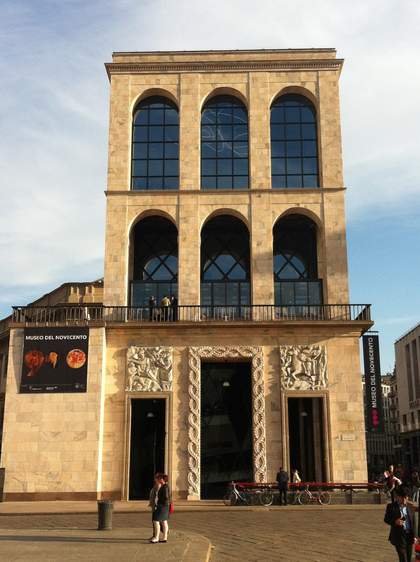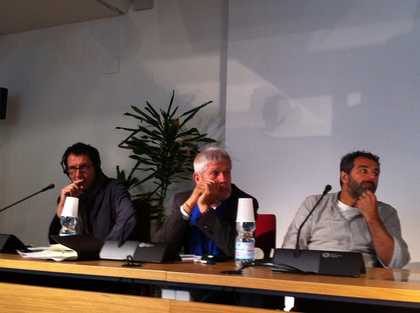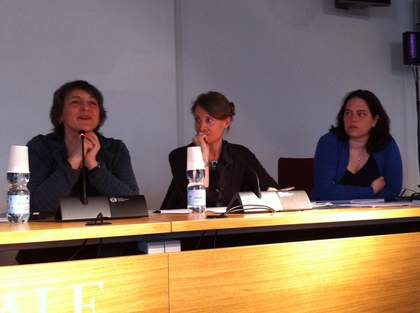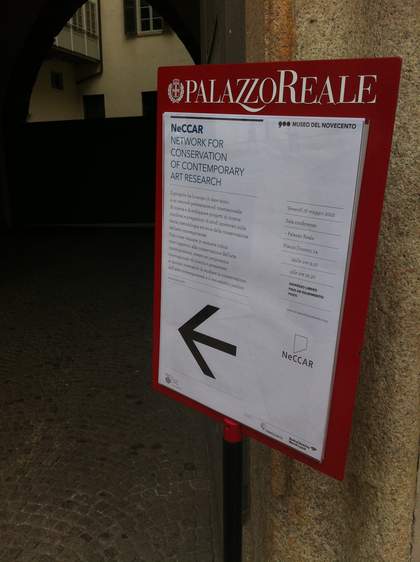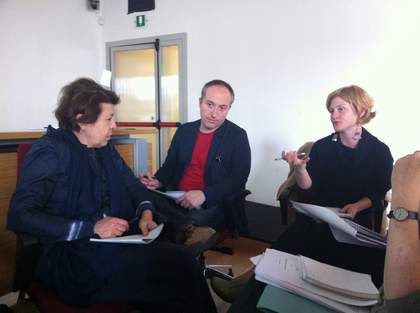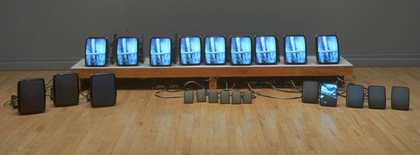The Network for Conservation of Contemporary Art Research (NeCCAR) convened for the first time at the symposium Cultures of Conservation in Milan at the Museo de Novecento on 17 and 18 May 2012.
Bringing together researchers and conservators from across Europe, the aim of the network is to organise three international meetings, of which Cultures of Conservation was the first. The second meeting Performing Documentation in the Conservation of Contemporary will be in Lisbon in June 2013 and the third meeting Identity and Variability will be held in Glasgow in the autumn of 2014. As well as producing publications, the NeCCAR partners will also develop a proposal for a Marie Curie Initial Training Network (MC ITN).
Conference report from Milan
On the first day of the meeting the network participants introduced their own research and education programmes and discussed the most urgent needs within the field of contemporary art conservation research and education, in their respective countries. Issues raised included: the lack of exchange of research outcomes between institutions; the differing needs of large and small institutions; the question to what extent conservators should be ‘all-rounders’ or specialists and the need for a theoretical and methodological framework which might serve to both unite individual case studies and form the basis for interdisciplinary collaboration.
The second day began with a public Round Table discussion, featuring Mariano Boggia (Fondazione Merz, Turin) Roberto Dipasquale (Società Attitudine Forma, Turin), Antonio Rava (Società Rava & C. Srl, Turin), Paolo Rosa (Studio Azzurro Produzioni S.r.l., Milan) and Marco Scotini (Archivio Gianni Colombo, Milano).
After a warm welcome by Marina Pugliese (Museo del Novecento) all participants provided a brief statement in response to the following questions:
- To what extent do differences in conservation training in different countries have an impact on the international culture of conservation?
- Do different cultural traditions have an impact on the approach to restoration? And if so, how does this manifest in your own nation?
- Are you of the opinion that it is more useful to have a broad general knowledge encompassing many aspects of the contemporary art sector when applied to contemporary art conservation practise, or rather be highly specialised in a singular field and collaborate with a team of people each with their own specialisations?
- What is most urgently needed in our field of research?
- Conservators constantly have to deal with decision making. In the absence of the artist, who do you believe has the right to decide on the substition of an artwork or a conservation treatment? The collector? The artist’s Foundation? Or, should a foundation not exist, the artist’s heirs? Who guarantees the conservator’s choice to be the correct choice?
- How different are the approaches of the public sector from that of the private sector to contemporary art conservation? Is there a way to ensure correct methodologies and good practice in both fields?
The responses provided a valuable insight into the Italian culture of conservation. Among the issues debated were the challenges of the transfer of tacit knowledge and the wish to capture the relationship between the audience and the (interactive) artwork within our documentation and understanding of an (interactive) artwork. The meeting was animated and well attended and thanks to the openness of the participants and their stimulating contributions, the Round Table provided much food for thought and proved to be an excellent starting point for the discussion on the MC ITN proposal later that day.
- Download the NeCCAR conference abstracts (PDF, 167Kb)
- Download the round table meeting participants (PDF, 102Kb)
- Download the transcript of the round table meeting (PDF, 155Kb)
- Download the audio of the round table meeting – this recording is in Italian. The audio will open and play in your browser.


